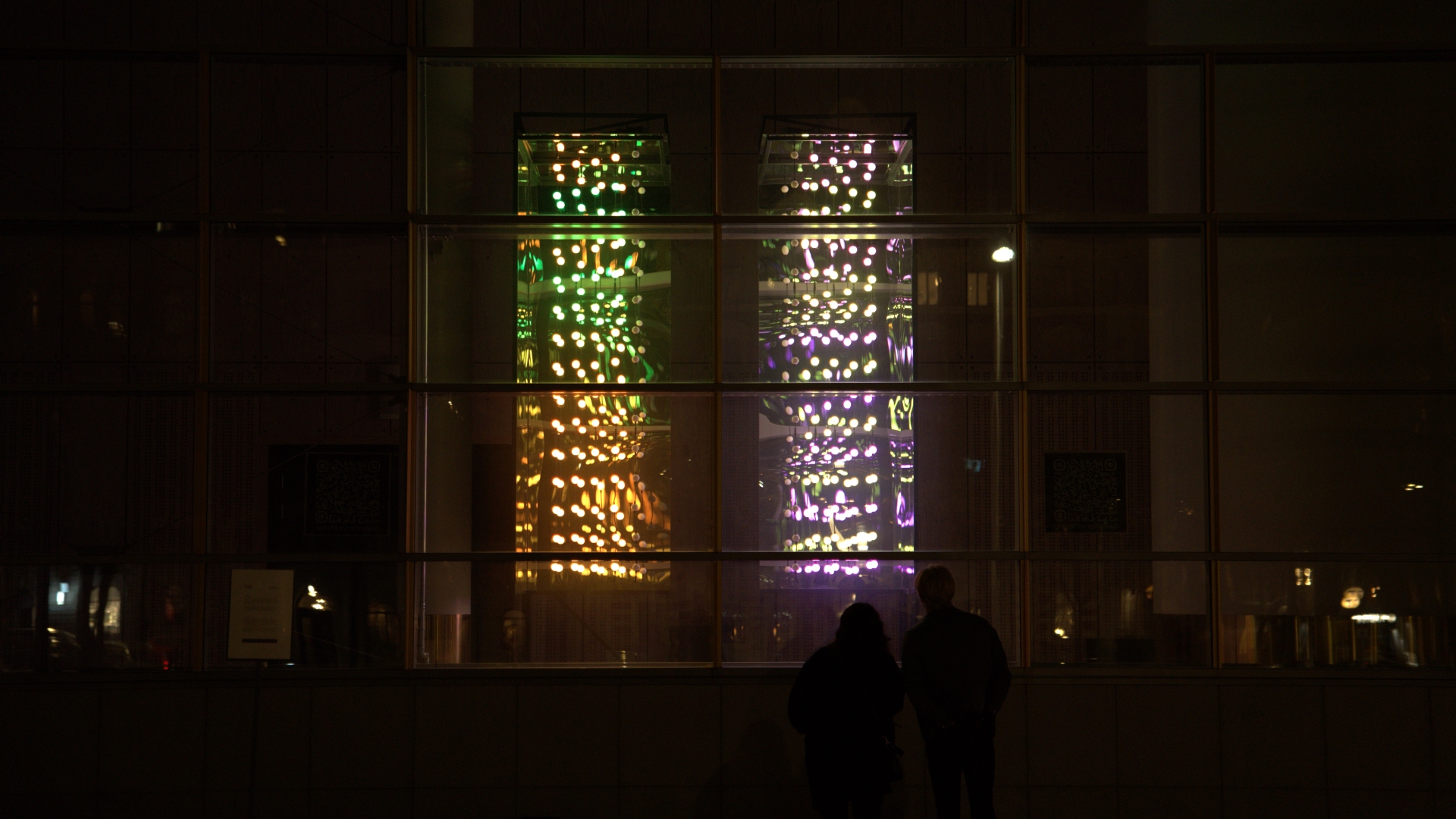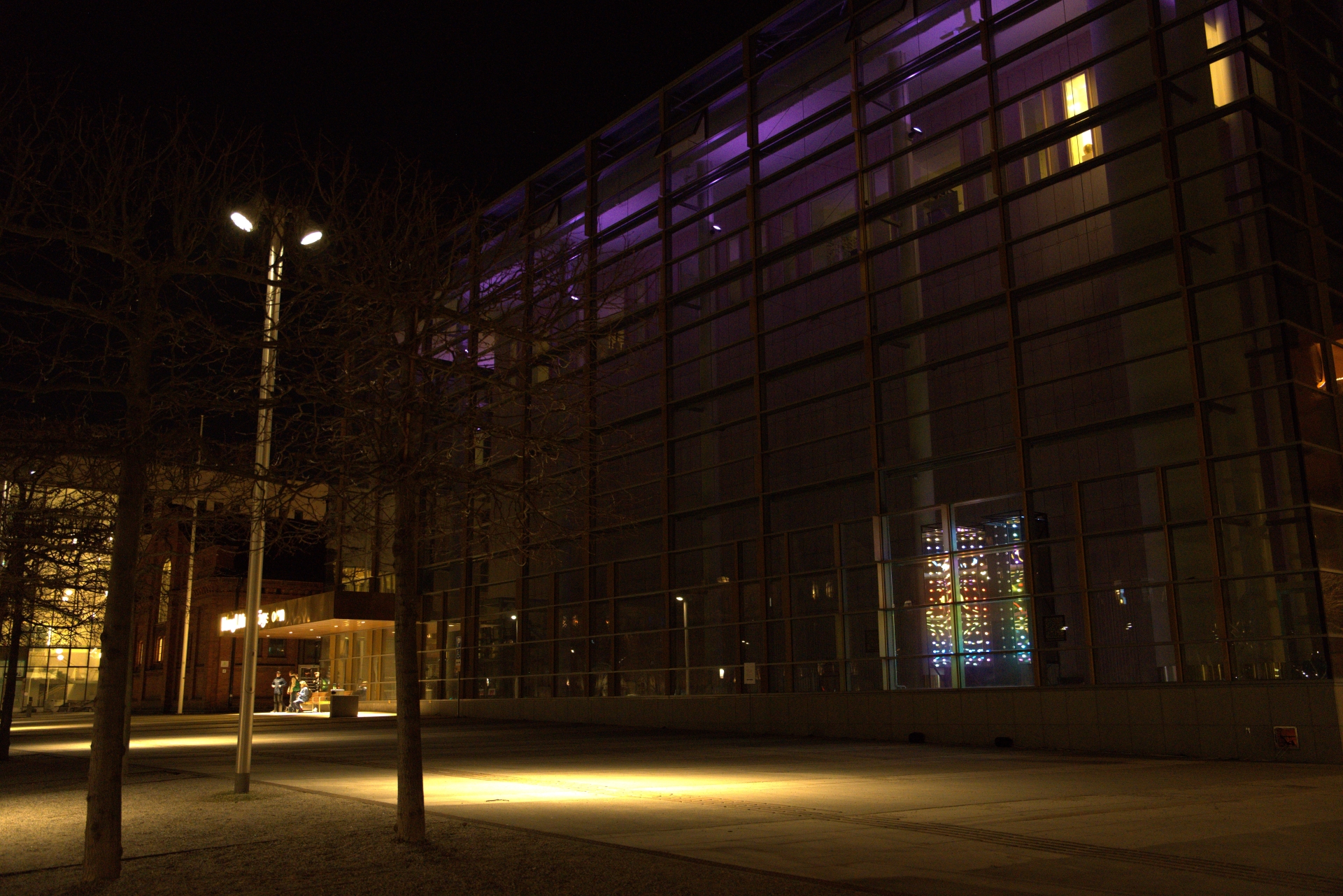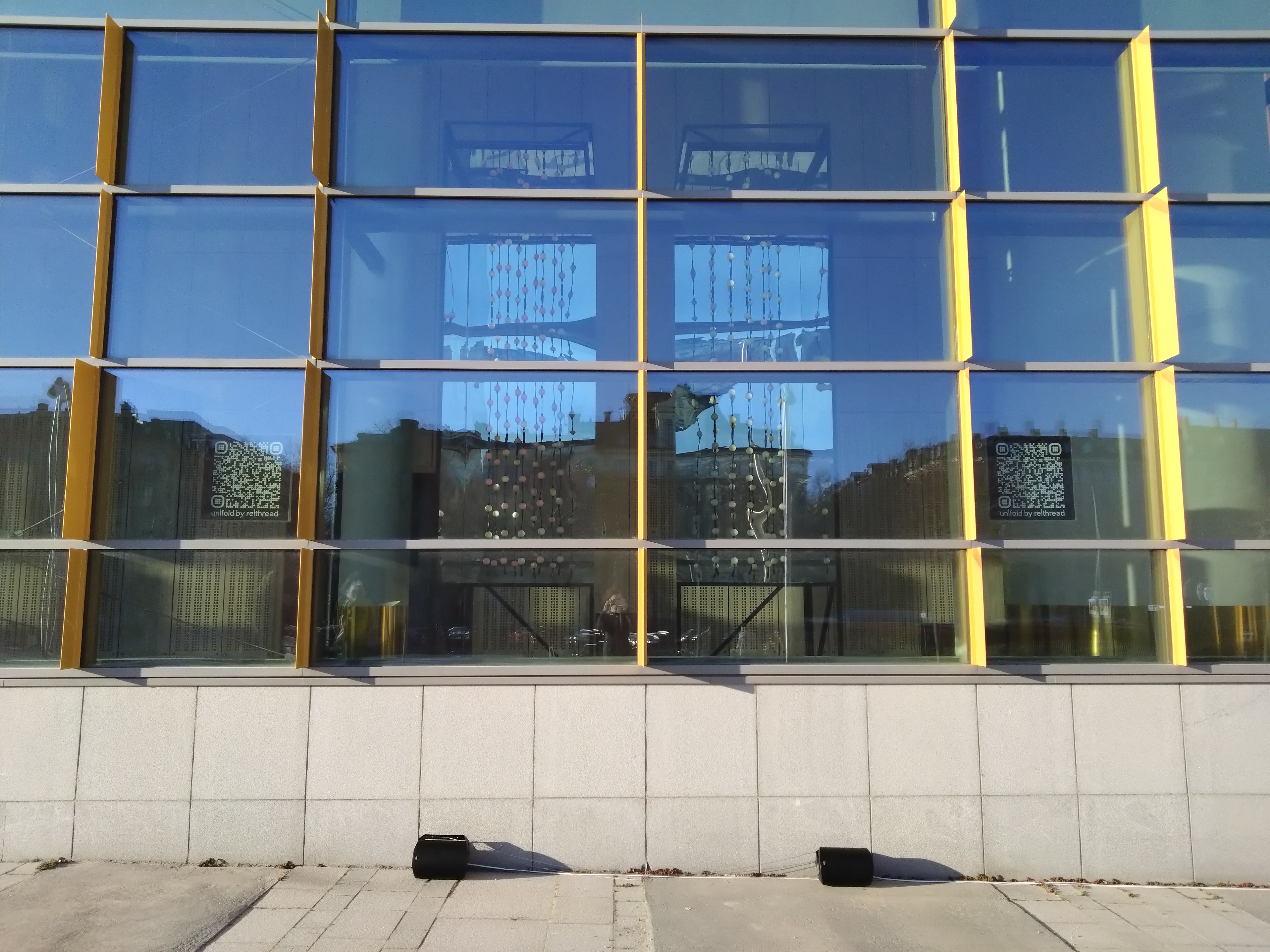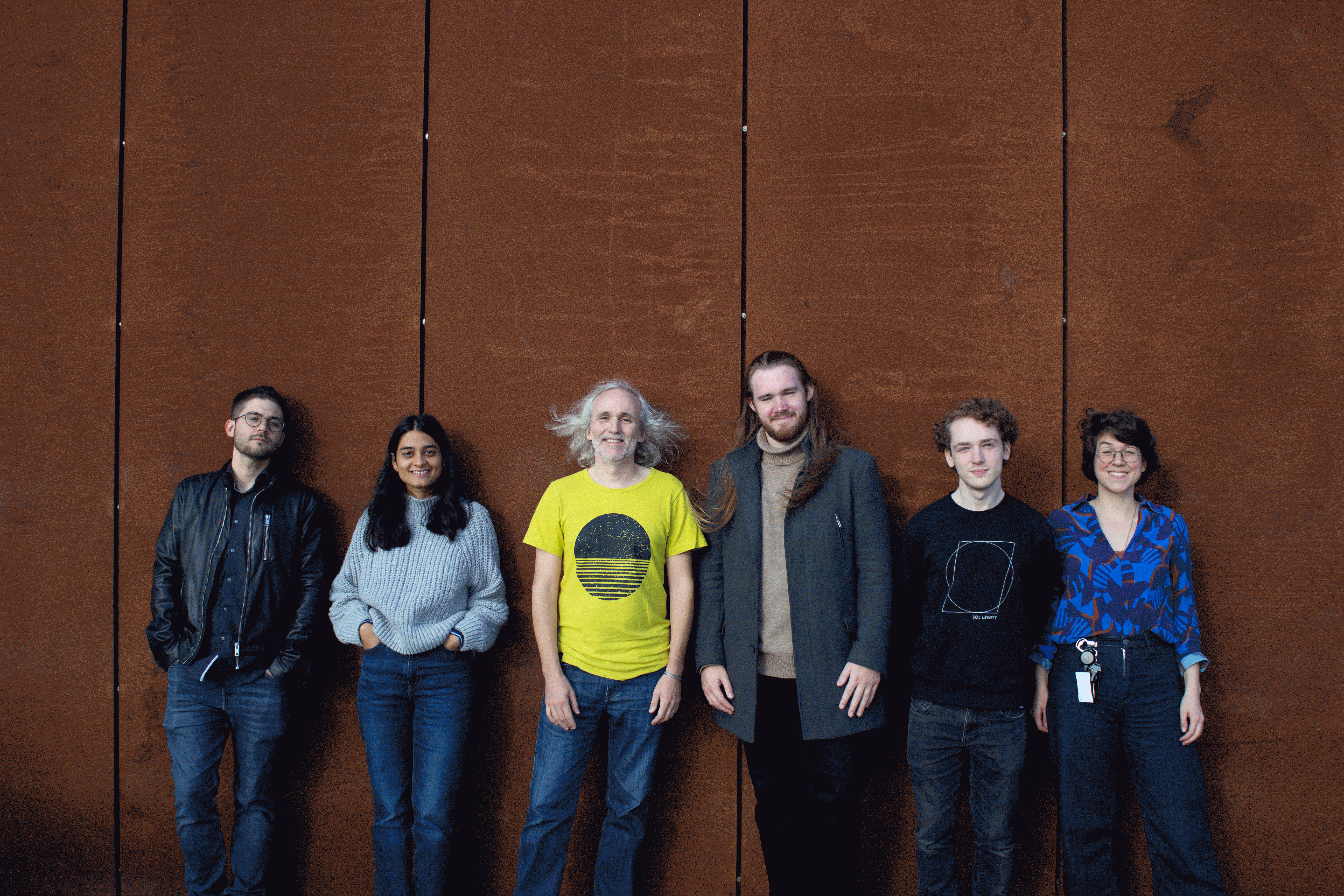


un|fold is a multidimensional light and sound sculpture, originally created for the historic Turbine Hall at the KTH Royal Institute of Technology, as part of the Nobel Week Lights 2022. It contrasts the simplicity of digital actions that can be used to explain complex chemical processes with the actual complexity and intricacies of the software traces that perform these actions.

In 2020, the Nobel Prize in Chemistry was awarded to E. Charpentier and J. Doudna “for the development of a method for genome editing.” One way of explaining genome editing is to liken it to editing in a text document, specifically to “search and replace”, since the key to the CRISPR technology is the ability to identify and replace a part of the DNA. While the processes that enable the CRISPR search and replace action on genomes are extremely sophisticated, people draw parallels with text editing as a simple analogy in order to make the complex chemistry more accessible.
A search and replace operation in a text editor is appropriate to illustrate the complexity of CRISPR with a mundane digital operation that is easier to grasp than the intricate chemical processes involved in DNA engineering. It is fascinating to notice that, in contrast to this apparent simplicity, the software processes involved in a search and replace are intricate and complex. Even what we perceive as the simplest digital sections is an invisible and intangible set of processes that run millions of operations per second, on top of world-wide networks. With this software art installation, called un|fold, we wish to draw attention to the hidden yet impressive and beautiful complexity that lies below the most basic digital actions. Our goal is to create appreciation and interest in the intricate layers of code involved in the actions of search and replace, through a multidimensional light and sound sculpture.
un|fold’s lights and sound are algorithmically generated based on data. The data is the recording of all software operations that are performed by a text editor when a human user performs the following task: search for “Hello there” and replace it by “Hi there”. For this artwork, we record the function calls performed in a Java virtual machine. un|fold then plays back the sequence of functions at a constant speed of 25ms per event, mapping them to a LED and sound artwork. The quasi instantaneous search and replace software is turned into a 2h30 multimedia piece, letting the audience appreciate the sublime nature of the invisible digital world that’s around us.
un|fold unveils one specific aspect of software’s nature: modern software is built in layers upon layers through decades of work by many, often practically anonymous, individuals. Programmers of new software rely on collections of code written by others, which in turn relies on code written by others, and so on. These layers are referred to as the software supply chain.
In un|fold, we reveal the deep software supply chain of search and replace, LEDs referencing how far away we are from the code written especially for that action, and sound reflecting on the diversity of sections of code.

| 2022-12-06 | KTH communication on Facebook and on LinkedIn |
| 2022-12-07 | Innovative Genomics Institute on Twitter |
un|fold was designed and developed by the re|thread collective: Erik Natanael Gustafsson, Maria Kling, Roni Kaufman, and Benoit Baudry. For un|fold, re|thread collective features Deepika Tiwari and César Soto Valero, software experts.
 From left to right: César, Deepika, Benoit, Erik, Roni and Maria
From left to right: César, Deepika, Benoit, Erik, Roni and Maria
un|fold was supported by the KTH Royal Institute of Technology, The Nobel Week Lights and the Wallenberg Autonomous Systems, Software and AI Program (WASP). Special thanks to Henrik Frisk (KMH) for his support and for giving us access to an amazing space.
